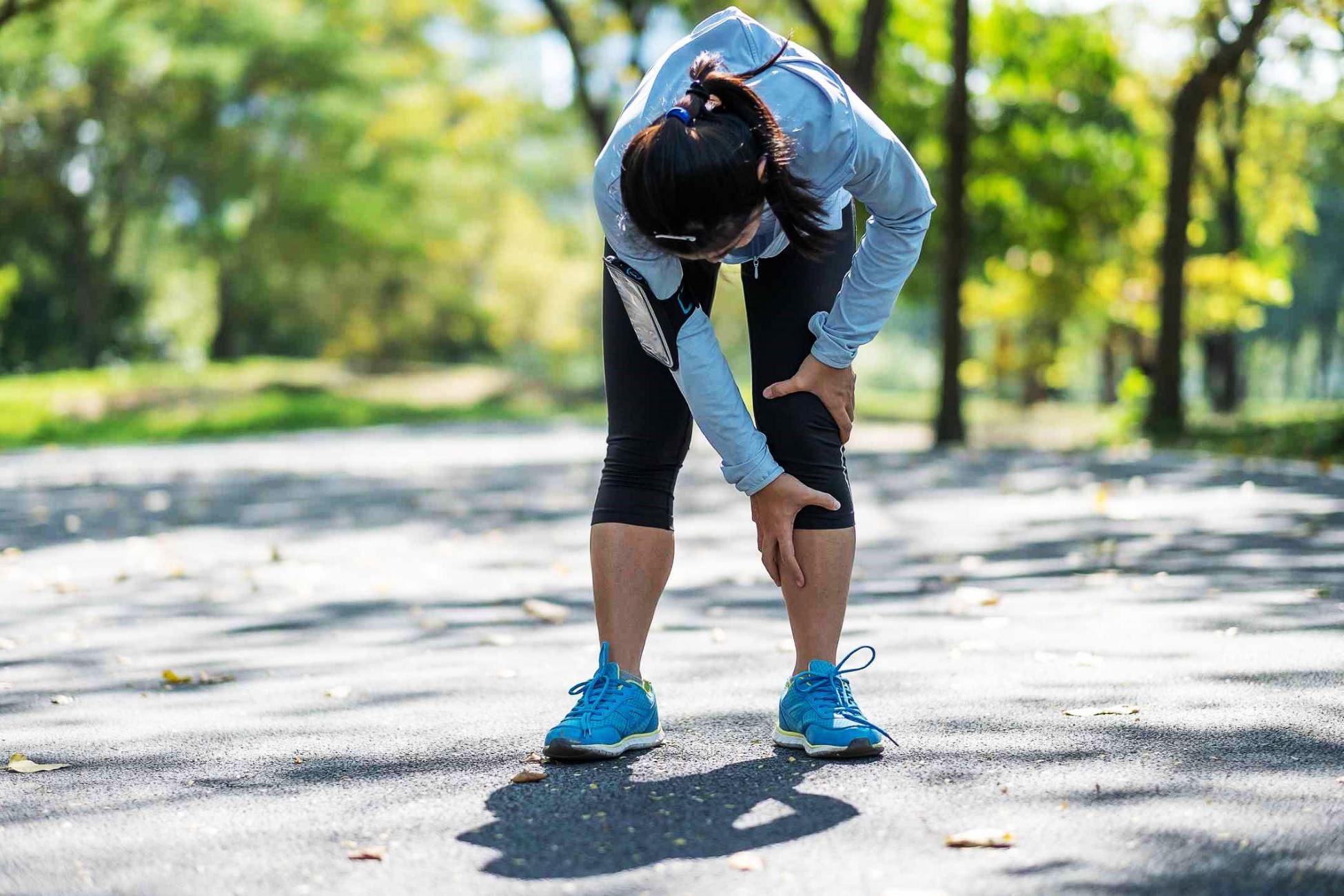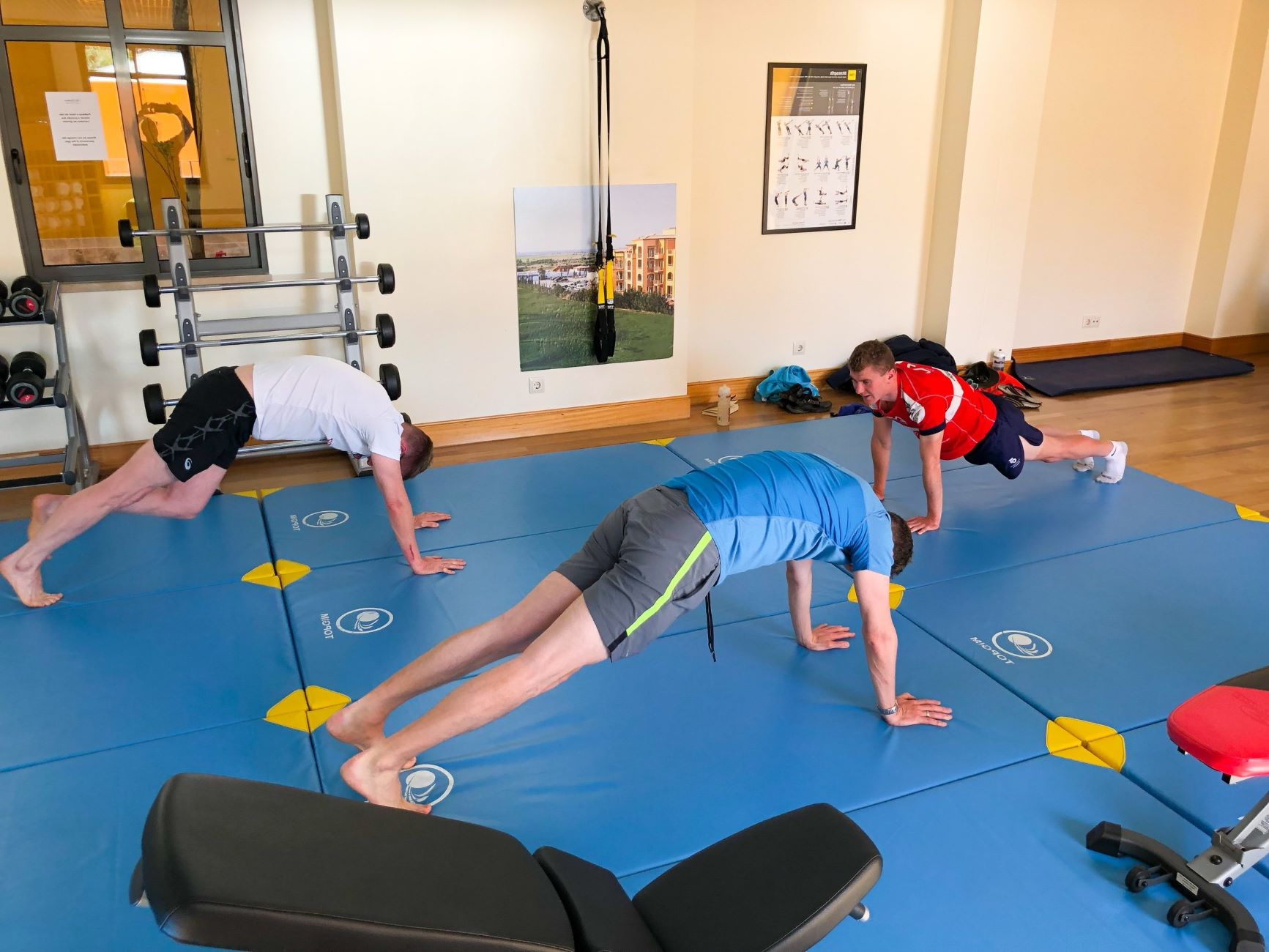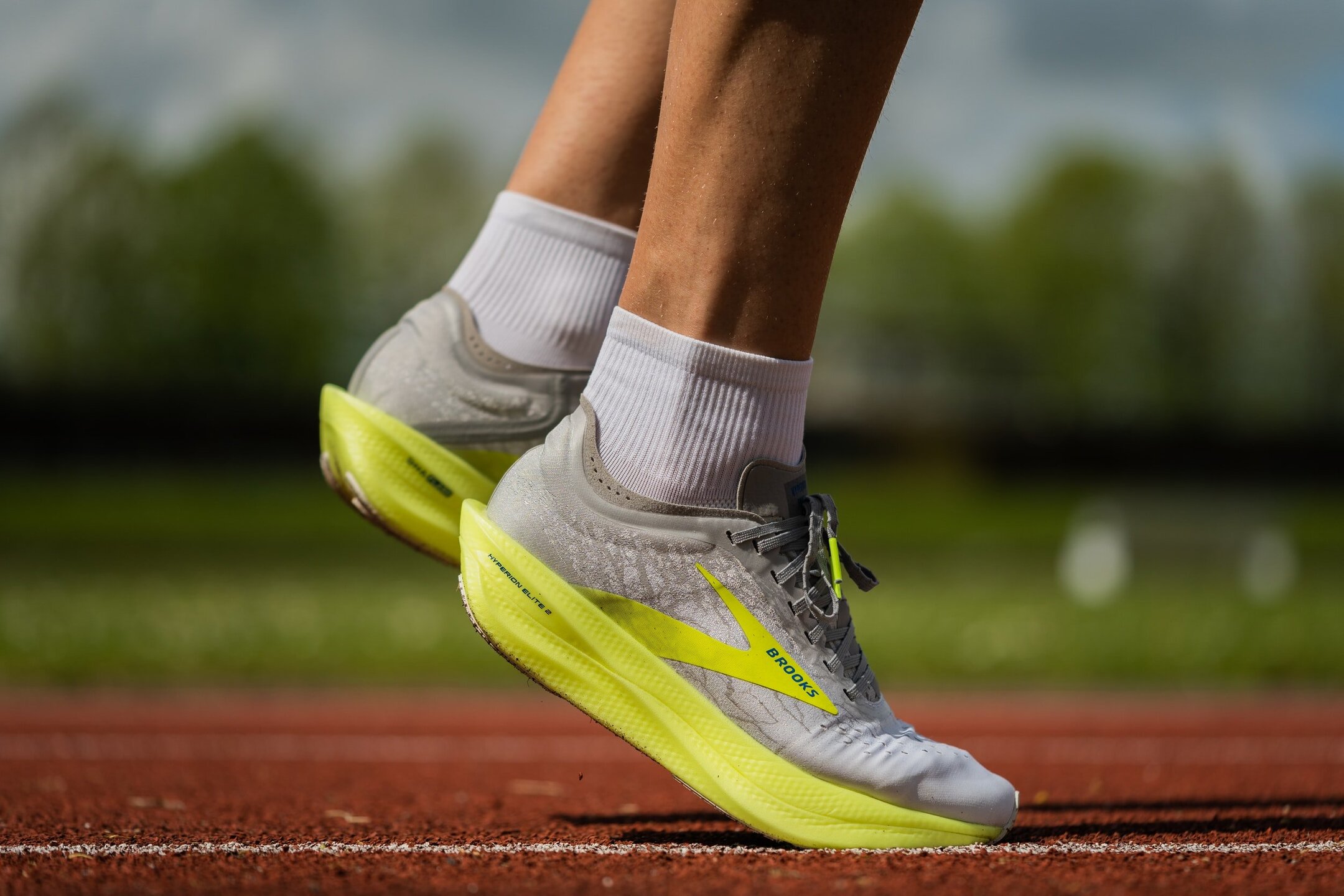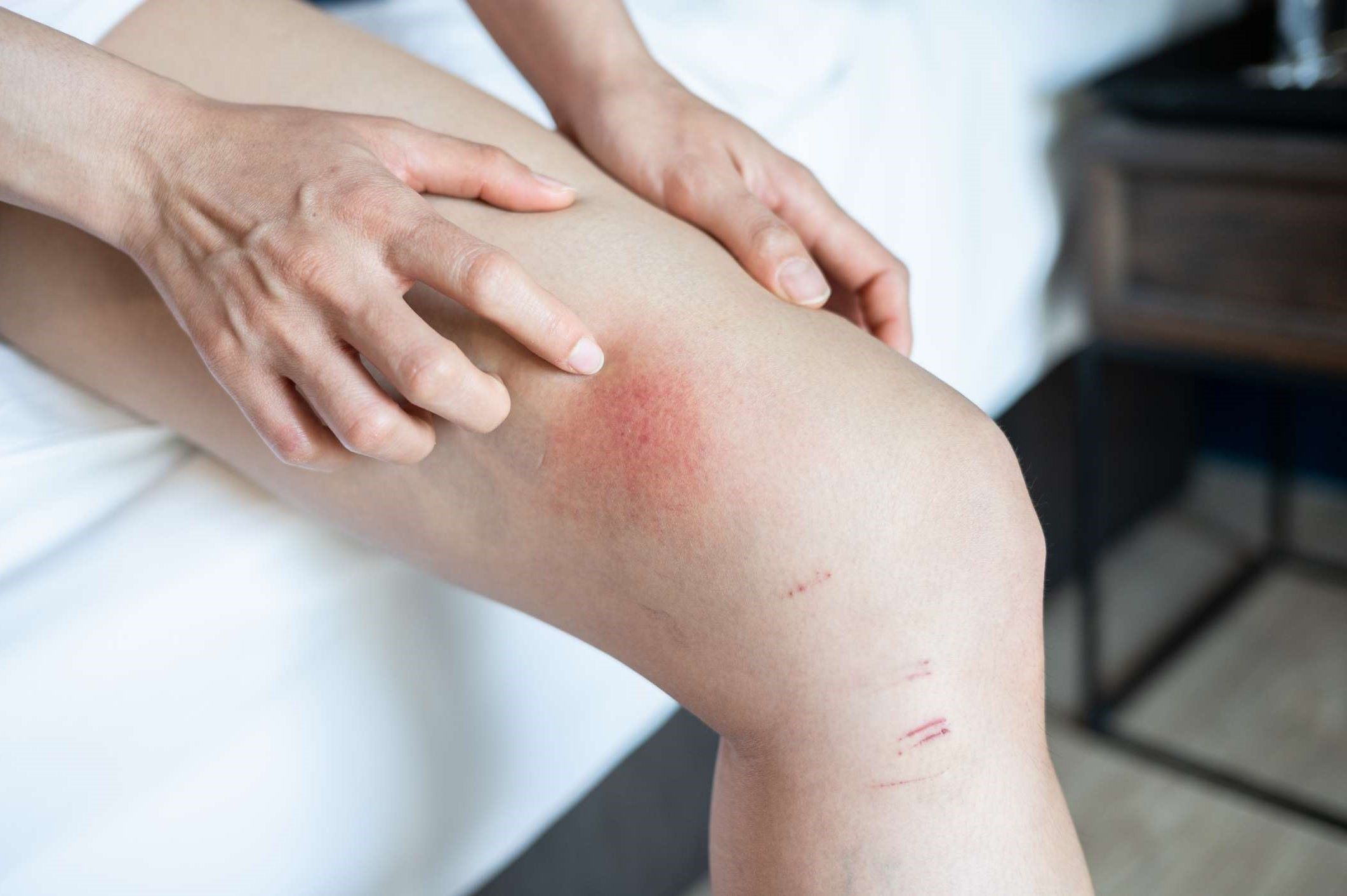Home>Health & Nutrition>Injury Prevention>Essential Information On Joint Health For Runners
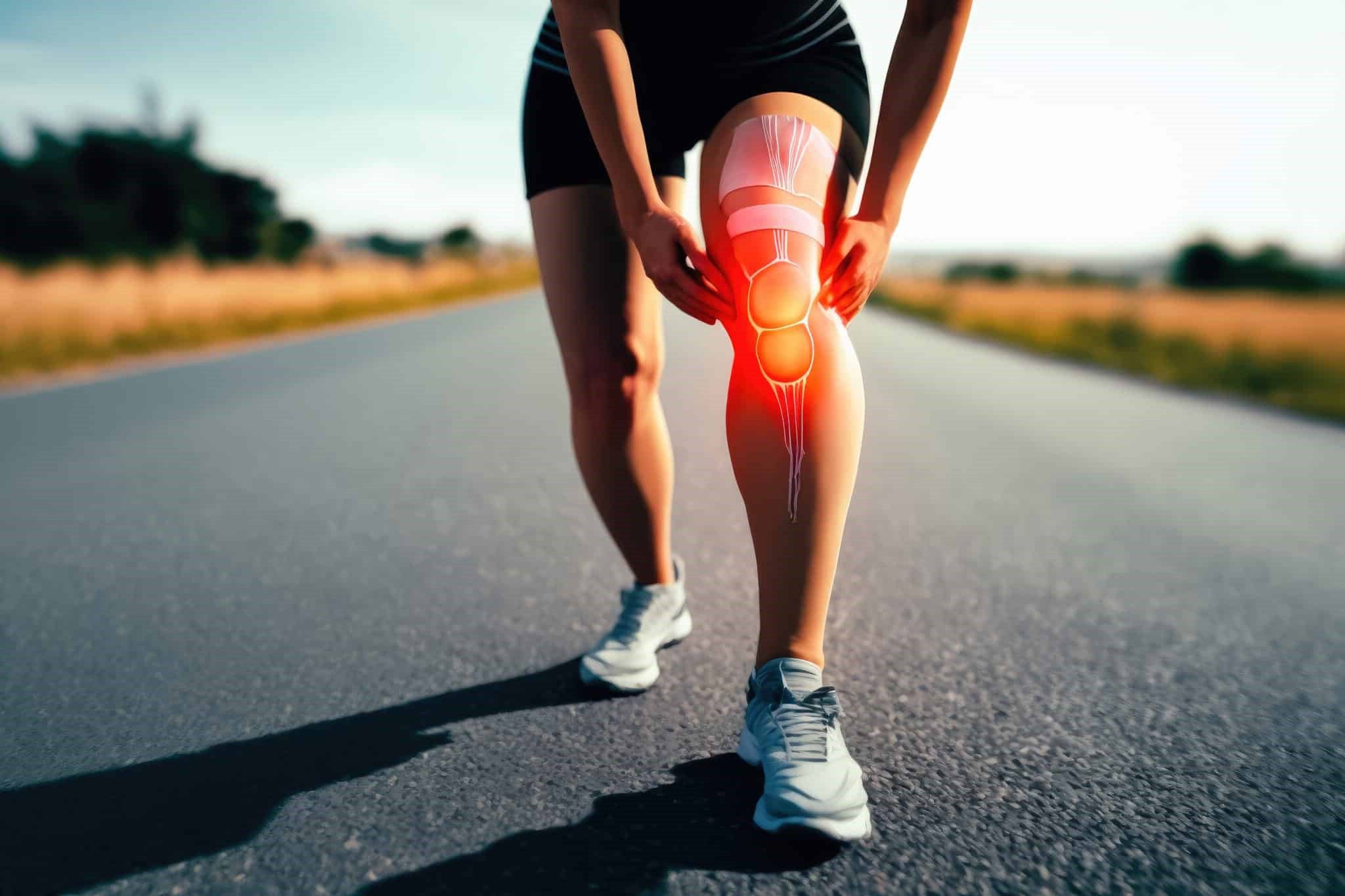

Injury Prevention
Essential Information On Joint Health For Runners
Published: February 27, 2024
Discover essential tips for injury prevention and maintaining joint health for runners. Learn how to protect your joints and stay injury-free.
(Many of the links in this article redirect to a specific reviewed product. Your purchase of these products through affiliate links helps to generate commission for Therunningadvisor.com, at no extra cost. Learn more)
Table of Contents
Importance of Joint Health for Runners
Joint health is a critical aspect of overall well-being for runners. The repetitive impact and stress that running places on the body can take a toll on the joints, making it essential for runners to prioritize joint health. Healthy joints are fundamental for maintaining an active lifestyle and achieving peak performance in running endeavors.
The joints, including the knees, hips, and ankles, act as shock absorbers during running, cushioning the impact of each stride. When the joints are not in optimal condition, runners are at a higher risk of experiencing discomfort, pain, and potential injuries that can hinder their training and performance.
Furthermore, joint health directly influences a runner's ability to maintain proper form and technique. When joints are compromised, it can lead to altered biomechanics, potentially causing imbalances and inefficiencies in movement. This can not only impede performance but also increase the risk of developing compensatory injuries in other areas of the body.
By prioritizing joint health, runners can mitigate the risk of developing chronic conditions such as osteoarthritis, which can significantly impact their long-term ability to engage in running and other physical activities. Additionally, maintaining strong and resilient joints can contribute to improved stability, balance, and overall agility, enhancing a runner's capacity to navigate various terrains and challenges.
In essence, the significance of joint health for runners cannot be overstated. It is the foundation upon which successful and sustainable running endeavors are built. By proactively addressing joint health, runners can safeguard themselves against potential setbacks and enjoy the countless physical and mental benefits that running has to offer.
Common Joint Injuries in Runners
Running is a high-impact activity that places significant stress on the body, particularly the joints. As a result, runners are susceptible to a range of common joint injuries that can impede their performance and overall well-being. Understanding these potential injuries is crucial for proactive injury prevention and early intervention.
-
Runner's Knee (Patellofemoral Pain Syndrome): This prevalent condition is characterized by pain around or behind the kneecap, often exacerbated by activities such as running, squatting, or climbing stairs. Runner's knee can result from factors such as overuse, muscle imbalances, or improper running mechanics. It is essential for runners to address contributing factors such as weak quadriceps or tight hamstrings to alleviate this discomfort.
-
Iliotibial (IT) Band Syndrome: The IT band, a fibrous tissue that runs along the outside of the thigh, can become inflamed due to repetitive friction against the thigh bone. Runners with IT band syndrome often experience sharp pain on the outside of the knee, particularly during the latter stages of a run. This injury is commonly associated with overtraining, inadequate warm-up, or running on uneven surfaces.
-
Ankle Sprains: Runners are susceptible to ankle sprains, which occur when the ligaments supporting the ankle are stretched or torn. Uneven terrain, sudden directional changes, or inadequate footwear can contribute to this injury. Ankle sprains can range from mild to severe, necessitating appropriate rest, rehabilitation, and gradual return to running activities.
-
Achilles Tendinitis: The Achilles tendon, located at the back of the ankle, can become inflamed due to overuse or inadequate stretching. Runners with Achilles tendinitis often experience pain and stiffness in the tendon, particularly during the initial steps of a run. Proper warm-up, calf strengthening exercises, and gradual progression of training intensity can help mitigate this condition.
-
Stress Fractures: Repetitive stress on the bones, particularly in the lower legs and feet, can lead to stress fractures in runners. These micro-fractures can result from overtraining, sudden increases in mileage, or running on hard surfaces. Recognizing the early signs of stress fractures, such as localized pain during activity, is crucial to prevent further damage and facilitate timely recovery.
By familiarizing themselves with these common joint injuries, runners can proactively implement strategies to mitigate the risk of occurrence. Additionally, early recognition of symptoms and appropriate intervention can significantly contribute to the effective management and resolution of these injuries, allowing runners to maintain their passion for running while prioritizing their joint health.
Tips for Preventing Joint Injuries
Preventing joint injuries is paramount for runners aiming to sustain their passion for running and maintain optimal performance. By implementing proactive measures, runners can significantly reduce the risk of debilitating joint issues that may impede their training and overall well-being. Here are essential tips for preventing joint injuries:
-
Gradual Progression: Gradually increasing running mileage and intensity allows the body to adapt and strengthen, reducing the likelihood of overuse injuries. Sudden spikes in training volume can place excessive stress on the joints, leading to potential injuries such as stress fractures or tendonitis.
-
Proper Footwear: Investing in high-quality running shoes that provide adequate cushioning and support is crucial for mitigating impact on the joints. Runners should regularly assess the condition of their shoes and replace them as needed to maintain optimal shock absorption and stability.
-
Cross-Training: Engaging in diverse physical activities such as swimming, cycling, or strength training can help alleviate the repetitive stress on specific joints while promoting overall fitness and muscular balance. Cross-training also enhances joint mobility and stability, reducing the risk of overuse injuries.
-
Dynamic Warm-Up and Cool Down: Prior to a run, incorporating dynamic warm-up exercises can prepare the muscles and joints for the impending activity, reducing the risk of strain or injury. Similarly, a thorough cool-down routine, including stretching and mobility exercises, can aid in promoting joint flexibility and recovery.
-
Proper Running Form: Focusing on maintaining proper running form, including a balanced stride and appropriate foot strike, can minimize undue stress on the joints. Runners should be mindful of their posture and biomechanics to optimize efficiency and reduce the risk of injury.
-
Strength and Flexibility Training: Incorporating targeted strength and flexibility exercises, particularly for the lower body and core, can enhance muscular support around the joints and improve overall stability. Stronger muscles and flexible tendons and ligaments contribute to better joint resilience and injury prevention.
-
Listen to Your Body: Paying attention to subtle signs of discomfort or pain during running activities is crucial. Ignoring persistent joint discomfort can exacerbate underlying issues, leading to more severe injuries. It is essential to address any discomfort promptly and seek appropriate guidance if needed.
-
Appropriate Rest and Recovery: Allowing adequate time for rest and recovery between runs is vital for joint health. Rest days and active recovery periods provide the body with the opportunity to repair and adapt, reducing the risk of overuse injuries and promoting long-term joint resilience.
By integrating these preventive measures into their training regimen, runners can proactively safeguard their joint health and minimize the likelihood of experiencing debilitating injuries. Prioritizing joint health not only supports consistent and enjoyable running experiences but also contributes to overall physical well-being and longevity in the sport.
Best Practices for Maintaining Joint Health
Maintaining optimal joint health is essential for runners to sustain their passion for the sport and minimize the risk of debilitating injuries. By incorporating best practices into their routine, runners can proactively support the resilience and functionality of their joints, enabling them to pursue their running endeavors with confidence and longevity.
Consistent Strength and Stability Training
Integrating regular strength and stability training into a running regimen is paramount for maintaining joint health. Targeted exercises that focus on strengthening the muscles surrounding the joints, particularly the hips, knees, and ankles, can enhance stability and reduce the risk of imbalances that may lead to injuries. Incorporating exercises such as squats, lunges, and calf raises can fortify the lower body, providing crucial support for the joints during running activities.
Read more: 7 Easy Exercises To Strengthen Your Joints
Emphasis on Flexibility and Mobility
Prioritizing flexibility and mobility through dedicated stretching and dynamic movement routines is instrumental in promoting joint health. Enhanced flexibility in the muscles and connective tissues surrounding the joints can contribute to improved range of motion and reduced stiffness, mitigating the likelihood of strain or injury during running. Implementing stretching exercises that target key areas such as the quadriceps, hamstrings, and calves can aid in maintaining optimal joint mobility and function.
Mindful Recovery Practices
Effective recovery strategies play a pivotal role in sustaining joint health for runners. Embracing practices such as foam rolling, massage therapy, and gentle mobility exercises can facilitate the release of muscular tension and promote circulation, aiding in the recovery and repair of the joints. Additionally, prioritizing adequate sleep and nutrition to support the body's natural healing processes is crucial for optimizing joint recovery and resilience.
Nutrient-Rich Diet and Hydration
Nutrition plays a significant role in supporting joint health and overall well-being for runners. Consuming a balanced diet rich in essential nutrients such as omega-3 fatty acids, vitamin D, and antioxidants can contribute to the maintenance of healthy joints and cartilage. Additionally, adequate hydration is vital for optimizing joint lubrication and reducing the risk of stiffness or discomfort during running activities.
Periodic Assessment and Adaptation
Regular assessment of training routines and running mechanics is essential for identifying potential areas of improvement to support joint health. Runners should periodically evaluate their footwear, running surfaces, and training volume to mitigate factors that may contribute to joint stress or discomfort. Making necessary adjustments based on these assessments can aid in preventing overuse injuries and optimizing joint resilience.
By integrating these best practices into their running regimen, runners can proactively prioritize joint health, fostering resilience and longevity in their pursuit of the sport. Embracing a holistic approach that encompasses strength, flexibility, recovery, nutrition, and adaptability can empower runners to enjoy sustained joint health, enabling them to thrive in their running endeavors for years to come.
The Role of Nutrition in Joint Health for Runners
Nutrition plays a pivotal role in supporting joint health for runners, encompassing a multifaceted approach that addresses the maintenance of cartilage, reduction of inflammation, and overall joint resilience. A well-rounded and nutrient-rich diet can significantly contribute to the longevity and functionality of the joints, enabling runners to pursue their passion for the sport with enhanced vitality and reduced risk of injury.
Omega-3 fatty acids, commonly found in fatty fish such as salmon and mackerel, hold immense significance in promoting joint health. These essential fatty acids possess anti-inflammatory properties, aiding in the reduction of joint inflammation and alleviation of stiffness. By incorporating omega-3-rich foods into their diet, runners can support the integrity of their joints and mitigate the impact of repetitive stress associated with running activities.
Vitamin D, renowned for its role in bone health, also holds relevance in the context of joint function. Adequate levels of vitamin D contribute to the absorption of calcium, a crucial mineral for maintaining strong and resilient bones and cartilage. Runners can obtain vitamin D from sources such as fortified dairy products, egg yolks, and exposure to sunlight, thereby supporting the structural integrity of their joints and minimizing the risk of degenerative conditions.
Antioxidants, abundant in colorful fruits and vegetables, play a vital role in combating oxidative stress and protecting the joints from cellular damage. The presence of antioxidants, such as vitamin C, vitamin E, and beta-carotene, contributes to the preservation of joint tissues and the reduction of inflammation, fostering an environment conducive to optimal joint health. By embracing a diverse and vibrant array of fruits and vegetables, runners can fortify their joints against the impact of oxidative stress and support their overall well-being.
Collagen, a protein that forms the structural framework of connective tissues, including those present in the joints, holds immense significance in maintaining joint resilience and functionality. While collagen is naturally produced by the body, certain dietary sources such as bone broth, gelatin, and collagen supplements can provide additional support for joint health. By incorporating collagen-rich foods into their diet, runners can contribute to the maintenance of healthy cartilage and the overall integrity of their joints.
In essence, the role of nutrition in joint health for runners extends beyond mere sustenance, encompassing a strategic approach to fortifying the body against the rigors of running. By embracing a diet rich in omega-3 fatty acids, vitamin D, antioxidants, and collagen-supporting nutrients, runners can proactively support the resilience and functionality of their joints, enabling them to pursue their running endeavors with enhanced vitality and longevity.
Effective Cross-Training for Joint Health
Effective cross-training serves as a valuable complement to a runner's primary training regimen, offering diverse physical activities that can significantly contribute to joint health and overall well-being. By incorporating cross-training into their routine, runners can mitigate the repetitive stress placed on specific joints during running activities while promoting muscular balance, flexibility, and overall fitness.
One of the key benefits of cross-training for joint health is the opportunity to engage in low-impact activities that provide a reprieve from the constant pounding experienced during running. Activities such as swimming, cycling, and water aerobics offer a cardiovascular workout without subjecting the joints to the same level of impact as running. This allows for active recovery while maintaining cardiovascular endurance, reducing the risk of overuse injuries and promoting joint resilience.
Furthermore, cross-training activities that emphasize flexibility and mobility, such as yoga and Pilates, can play a pivotal role in supporting joint health. These practices focus on enhancing joint range of motion, promoting muscular flexibility, and fostering improved posture and alignment. By incorporating these activities into their routine, runners can address muscular imbalances, reduce the risk of stiffness, and support optimal joint function, ultimately contributing to sustained joint health.
Strength training, another integral component of cross-training, offers substantial benefits for joint health. Targeted strength exercises that focus on the lower body, core, and stabilizing muscles can enhance muscular support around the joints, reducing the risk of imbalances and potential injuries. Additionally, strength training contributes to improved bone density, which is essential for maintaining strong and resilient joints, particularly in weight-bearing activities such as running.
Engaging in cross-training activities that promote overall muscular balance and stability is instrumental in mitigating the risk of overuse injuries and supporting joint resilience. By diversifying their physical activities and incorporating cross-training into their routine, runners can foster a holistic approach to joint health, promoting longevity and sustained enjoyment in their running endeavors.
In essence, effective cross-training for joint health encompasses a diverse array of activities that collectively contribute to the maintenance of resilient and functional joints. By embracing low-impact cardiovascular exercises, flexibility-focused practices, and targeted strength training, runners can proactively support their joint health, enabling them to pursue their passion for running with enhanced vitality and reduced risk of injury.
When to Seek Professional Help for Joint Pain
Persistent or debilitating joint pain should prompt runners to seek professional medical assistance to address potential underlying issues and prevent further complications. While minor aches and discomfort may be common during intense training, certain indicators warrant the attention of healthcare professionals to ensure timely intervention and appropriate management.
-
Persistent Discomfort: If joint pain persists beyond the typical post-exercise soreness and fails to subside with rest and self-care measures, it is advisable to consult a healthcare provider. Persistent discomfort, especially during daily activities or at rest, may signify an underlying injury or condition that requires professional evaluation.
-
Limited Range of Motion: Difficulty in moving a joint through its full range of motion, accompanied by stiffness or resistance, can indicate potential joint issues. Runners experiencing limitations in joint mobility, particularly if it hinders their running form or daily movements, should seek medical assessment to identify the root cause and prevent further impairment.
-
Swelling and Inflammation: Noticeable swelling, redness, or warmth around a joint, especially in the absence of a specific injury or trauma, warrants medical attention. These signs may indicate inflammation, bursitis, or other conditions that necessitate professional evaluation to determine the appropriate treatment and prevent exacerbation.
-
Persistent Instability or Weakness: Runners experiencing persistent joint instability, a feeling of joint "giving way," or weakness that affects their running performance should seek professional guidance. These symptoms may indicate ligament or tendon issues that require assessment and targeted rehabilitation to restore stability and function.
-
Unexplained Discomfort: Joint pain that arises without a clear cause or intensifies over time without a discernible trigger should be evaluated by a healthcare professional. Unexplained discomfort, especially if it interferes with running activities or daily functioning, may indicate an underlying condition that requires expert diagnosis and management.
-
History of Joint Injuries: Runners with a history of previous joint injuries, surgeries, or chronic conditions such as arthritis should remain vigilant for any changes in joint pain or function. Any recurrence of discomfort or new symptoms should prompt a consultation with a healthcare provider to address potential complications or evolving conditions.
-
Impact on Quality of Life: Joint pain that significantly impacts a runner's quality of life, including sleep disturbances, persistent discomfort during daily activities, or emotional distress, necessitates professional intervention. Addressing the impact of joint pain on overall well-being is crucial for comprehensive management and tailored treatment.
By recognizing these indicators and seeking professional help when necessary, runners can prioritize their joint health and mitigate the risk of enduring complications. Timely intervention and expert guidance can facilitate accurate diagnosis, personalized treatment plans, and effective rehabilitation strategies, empowering runners to address joint pain proactively and sustain their passion for running with optimal joint health.

